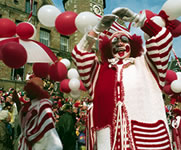Other highlights
Contact
Tourist Information
Im Alten Bahnhof
Rathausstrasse 57
66333 Völklingen
Email:
tourist-info@voelklingen.de
Internet:
Im Alten Bahnhof
Rathausstrasse 57
66333 Völklingen
Email:
tourist-info@voelklingen.de
Internet:
Places of interest
Although visitors come mainly to see the Völklingen Ironworks (a UNESCO World Heritage Site), the fourth largest town in the Saarland also has a number of other attractions, including its old town hall and the two neo-baroque churches, the Church of St. Eligius and the Church of Reconciliation. Thousands of ironworkers used to pass through the old railway station when the Völklingen Ironworks were in their heyday. Old railway station
When iron and steelworking enjoyed their heyday in the Völklingen Ironworks, every inch of the old railway station was bustling with thousands of its workers. Built between 1893 and 1894, the station was also an important hub for the raw materials used in iron production, which were transported from neighbouring France. St. Eligius Church
Built between 1912 and 1913, this neo-baroque church is dedicated to Saint Eligius – the bishop with the hammer and the anvil, and the patron saint of metalworkers. Its huge rectangular tower is the dominating feature of the town centre. A wooden figure of Saint Eligius, which was carved in France, stands in the church foyer. Church of Reconciliation
Of particular interest are the dome with its 3,500 coffers, and the ceiling fresco painted by Waldemar Kolmsperger the Younger, which portrays Christ descending from heaven above the founder of the Röchling Iron and Steelworks, members of the church congregation and smoking industrial chimneys. The design of this neo-baroque church with its 66-metre-high tower was based on Saarbrücken's Ludwig Church.
When iron and steelworking enjoyed their heyday in the Völklingen Ironworks, every inch of the old railway station was bustling with thousands of its workers. Built between 1893 and 1894, the station was also an important hub for the raw materials used in iron production, which were transported from neighbouring France.
Built between 1912 and 1913, this neo-baroque church is dedicated to Saint Eligius – the bishop with the hammer and the anvil, and the patron saint of metalworkers. Its huge rectangular tower is the dominating feature of the town centre. A wooden figure of Saint Eligius, which was carved in France, stands in the church foyer.
Of particular interest are the dome with its 3,500 coffers, and the ceiling fresco painted by Waldemar Kolmsperger the Younger, which portrays Christ descending from heaven above the founder of the Röchling Iron and Steelworks, members of the church congregation and smoking industrial chimneys. The design of this neo-baroque church with its 66-metre-high tower was based on Saarbrücken's Ludwig Church.
Travel Planner
Select an option...



